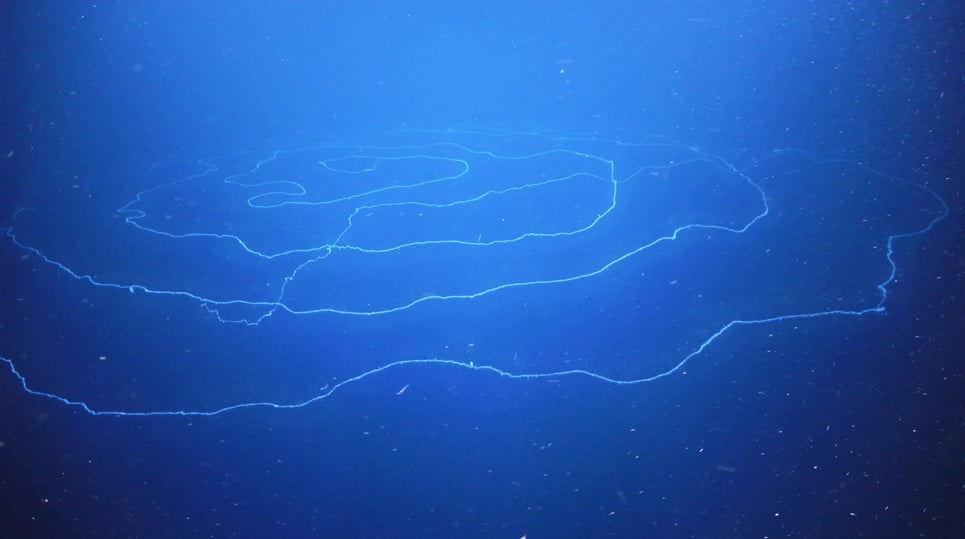
Australia is no stranger to bizarre and unique creatures, and nor are its coastlines. During an expedition that explored the deep sea off the continent’s coast, researchers have discovered over 30 new marine species. Among them was a siphonophore that measures nearly 150 feet (45 meters) in length. This is the longest creature that scientists have ever found.
The spire-like creature is actually made up of multiple smaller clones that are joined together, acting in unison as a single long string no thicker than a broomstick. If you were to pull and straighten this string, it would be the size of an 11-story building, twice as long as a blue whale.
This particular siphonophore, part of the genus Apolemia, was caught on film off Western Australia’s Nigaloo coast by researchers affiliated with the Western Australian Museum onboard the Schmidt Ocean Institute‘s (SOI) research vessel Falkor.
Usually, siphonophores are about 20 centimeters to a meter in size, but researchers have never seen anything this large before. The creature also employs a unique hunting strategy, coiling itself into a spiral in order to attack and catch prey.
Siphonophores, just like jellyfish, feed by dangling their stinging tentacles in the water. Sometimes, unsuspecting prey like small fish and crustaceans get stung and become paralyzed once they pass through the curtain of tentacles.
“There is so much we don’t know about the deep sea, and there are countless species never before seen,” SOI co-founder Wendy Schmidt said in the press release. “Our planet is deeply interconnected – what happens in the deep sea impacts life on land–and vice versa. This research is vital to advance our understanding of that connection – and the importance of protecting these fragile ecosystems. The Ningaloo Canyons are just one of many vast underwater wonders we are about to discover that can help us better understand our planet.”
Besides this impressive UFO-like creature, the researchers discovered dozens of other new candidate species around the Gascoyne Coast bioregion. It might, however, take many months — perhaps years given the current coronavirus situation — before they verify and formally described these new species.









